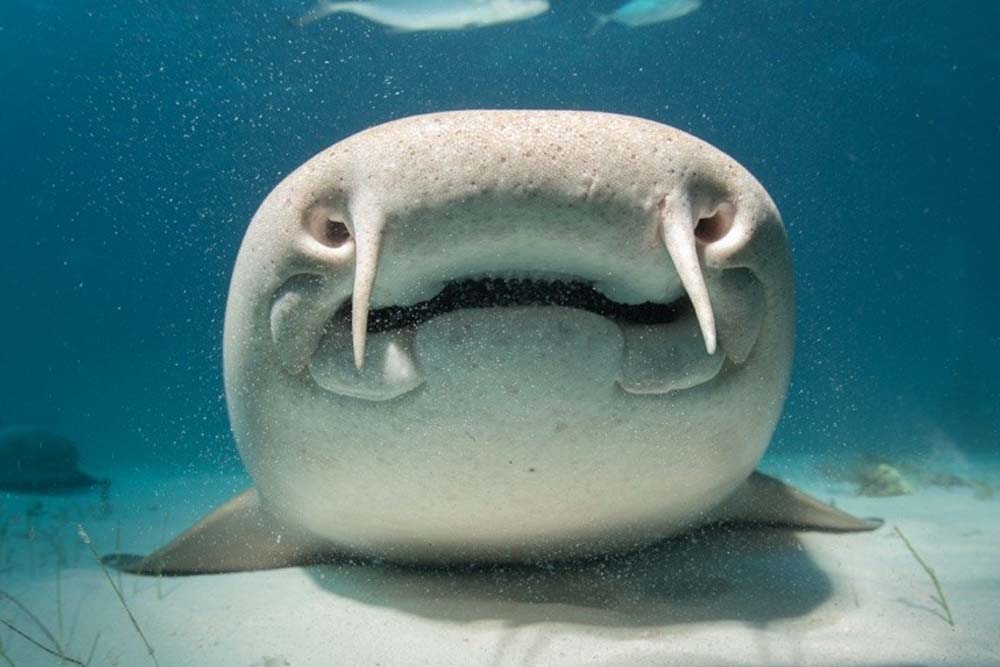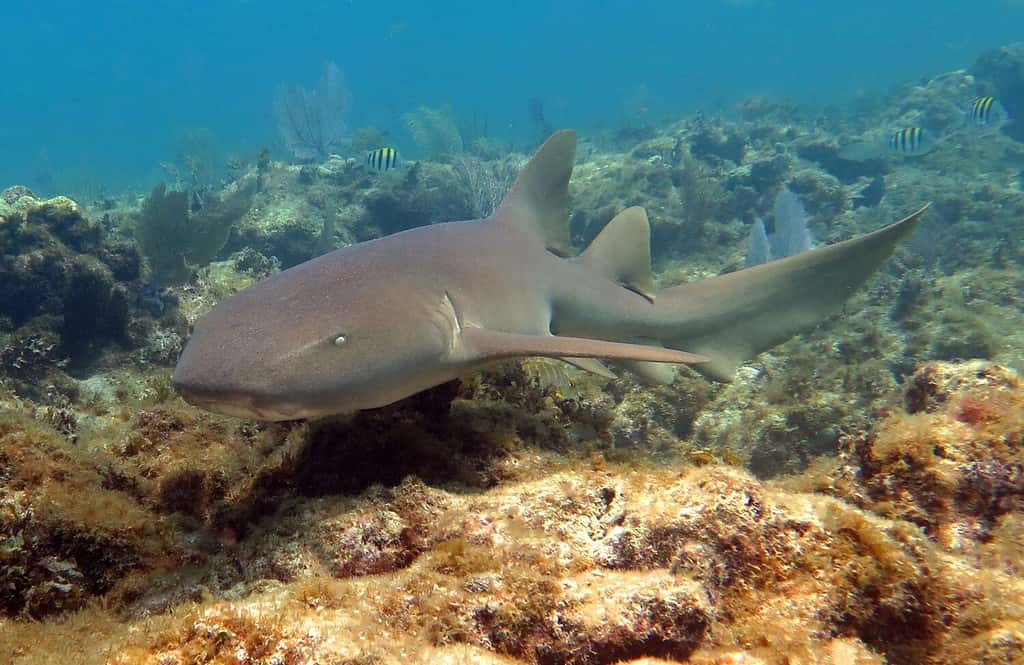Continue reading for our analysis...

When the fire and rescue department is called in to treat a shark bite, they expect to find an injured person and the shark long gone. However, when the Martin County Fire and Rescue Department was called out to this Florida beach, they found that the shark was STILL biting the victim! In the below clip, we get to see just how determined a nurse shark can be.
Where Do Nurse Sharks Normally Live?

Nurse sharks are bottom feeders.
©frantisekhojdysz/Shutterstock.com
Nurse sharks (Ginglymostoma cirratum) are usually large but peaceful fish. They live in tropical warm waters in the eastern Pacific Ocean and the eastern and western Atlantic Ocean. Their preferred habitats are coral reefs, rocky reefs, and the sand flats around them.
These guys are fairly easy to spot, even when they are not attached to your arm! The one in this clip was quite small but they can grow to be 10 feet in length. They are a brown-yellow color and have round heads with very small eyes.
Also, they have distinctive barbels that you also get a glimpse of in this clip. These are fleshy filaments that grow out of the mouth or snout. The barbels are equipped with taste receptors that help the nurse shark locate food. They are very useful as the nurse shark mainly feeds at night.
Do Nurse Sharks Have Teeth?

Nurse sharks have between 30 and 42 teeth in their upper jaw. They have 28 to 34 teeth in their lower jaw.
©Maui Topical Images/Shutterstock.com
This man seemed to be pretty laid back about being bitten by a shark and did not appear to be in too much pain. However, nurse sharks certainly have teeth. They have between 30 and 42 teeth in their upper jaw and between 28 to 34 teeth in their lower jaw. The teeth are arranged in single rows.
Nurse sharks are bottom feeders. They obtain their prey by sucking it up from the ocean floor like a vacuum. This powerful suction is created by the rapid expansion of their muscular pharyngeal cavity. It is powerful enough to suck a queen conch out of its shell!
The combination of powerful suction and serrated teeth is going to make it very difficult to get this nurse shark to let go. There are several reports of nurse sharks latching on to human swimmers. Experts claim that the best thing you can do is to stay in the water and the shark will eventually release you.
Is it Normal for Nurse Sharks to Attack People?

Mother and son swimming with nurse sharks
©shalamov/ via Getty Images
Nurse sharks are considered one of the more docile of the shark species and generally are not aggressive toward humans. When encountered, they often just swim away. Because they are known for their passive behavior and their inclination to wait for scraps at fishing docks, they have often been dubbed the puppy dogs of the shark world. However, they are still wild animals and as such, their behavior can’t be predicted for certain. They will often attack only when they feel threatened or if they have been provoked. There have not been many attacks throughout recorded history but of the 56 known, 51 were provoked. It may not be normal for nurse sharks to attack, but as wild animals, it is probable.
How Large Do Adult Nurse Sharks Get?

Nurse sharks average lengths of 7.5 to 9.75 feet in length, with females being larger than males.
©Daryl Duda/Shutterstock.com
When it comes to sharks, females are generally larger than males. An average female nurse shark is 7.5 to 9.75 feet in length and 200 to 330 pounds, although they are capable of growing up to 14 feet. Males average sizes of 6.8 to 7.5 feet and weigh between 120 to 200 pounds.
Thank you for reading! Have some feedback for us? Contact the AZ Animals editorial team.







